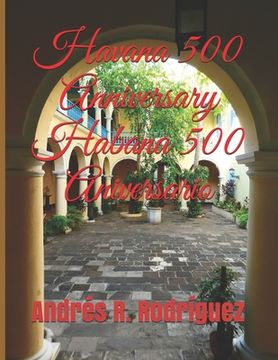Reseña del libro "Havana 500 Anniversary Habana 500 Aniversario (en Inglés)"
HAVANA'S HISTORY AT A GLANCE: San Cristóbal de La Habana was founded in 1519. The city began as a small collection of huts that eventually became the Spanish Empire's main naval station in the world. La Habana became a thriving, entrepreneurial port, the Caribbean's lighthouse-city, within the colonial Spanish Caribbean, due to its excellent harbor and strategic position facing the Gulf Stream. In 1553, Havana became the island's capital. In the 16th century and beginning of the 17th the city was attacked and besieged on several occasions by French, British and Dutch pirates, which catalyzed the construction of defenses, including massive walls. Its occupation by the British in 1762 led to Havana being exchanged for Florida, an indication of the high value the King of Spain placed on it. The King ordered the reinforcement of its fortifications to the highest possible level. Havana thus became the best protected of the ports in Spanish America. By 1810 the Spanish Main was imploding, and Havana ceased to be a must-stop trading post. Cuba remained part of Spain until 1898, perhaps because of its amazing wealth, its siege fortress tradition and extreme militarization. The country's destiny after 1898 was closely linked to the United States. As the largest of the islands in continental proximity between the subtropics and the tropics, and between English and Spanish America, Cuba was surrounded and affected by different socio-political trends. All this adds exoticism to Havana's urban culture. Its architecture includes buildings of great visual and cultural impact: Castillo del Morro (Morro Castle), Palacio del Segundo Cabo (Palace of the Second Corporal), Palacio de los Capitanes Generales (Captains-General Palace) or the Capitolio (Capitol Building). Havana, the "Paris of the Caribbean," was destined to become a place of refuge, a creative, hospitable, open and cosmopolitan city. As sweat turned into stone and mortar, a local way life, open to the world, became the distinguished trait of Habaneros as good hosts. On its flagpoles would wave proudly the flags of Spain, Britain, the U.S., and finally, Cuba. The sense of Cuban nationality was built around the concept of Havana, as presaged by the mass conducted at the site called El Templete in 1519. Perhaps more than a nationality, what the old stones of Havana exude is global universality.

